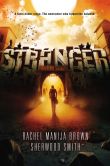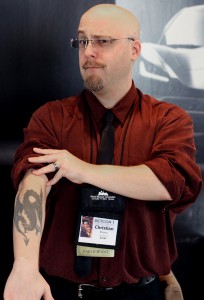The ALS Ice Bucket Challenge
The ALS Ice Bucket Challenge has gone rather viral. You’ve probably seen the videos on Facebook, Twitter, Tumblr, or the online social media site of your preference. I’ve also seen some people pointing out problems with the challenge, as well as people who are just flat-out sick of seeing everyone dumping icewater on their heads. (Though how anyone could get tired of that…?)
As I understand it, the original challenge was that if you were called out, you were supposed to either donate to the ALS Association, or else you could dump a bucket of icewater on your head. Alternate rules are that you either donate $100, or do the ice bucket and donate $10.
I want to address some of the points I’ve seen raised.
1. A bunch of people messing around and dumping icewater on themselves doesn’t do anything to raise money or awareness, or to help people with ALS.
It’s certainly true that some of the videos and postings don’t specifically talk about Amyotrophic Lateral Sclerosis (ALS), also known as Lou Gehrig’s disease. I’m sure there are a lot of people who have watched the video or joined in the icewater-dumping without ever having a clue why this all started.
On the other hand, the ALS Association has received $88.5 million in donations as of today, August 26. During the same period last year? They received $2.6 million.
In other words, the ice bucket challenge has raised more than $80 million in funding to for research and assistance to people with ALS. My understanding is that a great many people dumping icewater on their heads are also donating to the ALS Association.
I do wish more videos and posts would focus on the goal of raising money and awareness for ALS. And yes, maybe not everyone is donating, and maybe some people aren’t getting the point … but a lot of people are. I’ve seen a lot of people posting and talking about their own experiences with the disease as a direct result of the ice bucket challenge, and the financial results are about as indisputable as you can get.
Yeah, it’s a goofy fundraiser. (Says the guy who fundraised in 2012 by doing goofy cover poses.) But it’s also damned effective.
2. The peer pressure and shaming element is uncool.
 I admit, I have an instinctive response to people tagging and challenging me online, whether it’s the ice bucket or blogging about a particular thing or whatever the fad of the week might be.
I admit, I have an instinctive response to people tagging and challenging me online, whether it’s the ice bucket or blogging about a particular thing or whatever the fad of the week might be.
I got tagged for this one a while back, saw the icewater-dumping thing with no additional information or context, and said nope. Delete and move on.
I see this as a case-by-case thing. Some people have been very cool about “inviting” instead of “challenging” others — a small difference, but an important one, I think. Others have refused to tag anyone at all, and instead suggest that anyone who’s interested should jump in. And I’ve seen people emailing or checking in behind-the-scenes to ask before challenging someone, which is cool.
Short version on this? Don’t shame people for saying no, or for not answering at all. Some people don’t have a dollar to spare. Others choose to support different causes. Don’t be an asshole about it.
If you’re one of the people bullying and shaming others as a part of the challenge? You’re actually discouraging people from participating. Knock it off.
3. It’s physically dangerous.
I’ve seen several references to an article titled “Ice Bucket Challenge Sees First Fatality?”
Forbes has a follow-up with more information and discussion. There’s also a false report of a girl who broke her neck doing the challenge.
Is it dangerous? It’s hard to say whether or not Lancaster’s death was caused by the challenge, but it’s possible. The ALS Association notes, “The Ice Bucket Challenge may not be suitable for small children, the elderly, anyone in poor health, or animals of any kind, so please use good judgment.” The trouble is, we human beings aren’t always known for our good judgment. There’s also the temptation to crank it up a notch to make a more dramatic video. Author Patrick Rothfuss went with a tub full of dry ice.
I don’t have an answer on this one. It seems to me that the risk is minimal … but that yes, there may be a potential risk here. My daughter was tagged by her cousin, and if she chooses to do the challenge, I’d let her — but I’d also make sure it was supervised, and that she’s only using H20 ice.
4. It’s clogging up my newsfeed!
Welcome to the internet. Use your Mute and Block buttons. Or go look at some cats instead.
#
While not perfect, I see this as a surprisingly effective fundraiser for a good cause, one that’s raised an impressive amount of money as well as some awareness, and also produced some fun, entertaining videos. I’m also reconsidering participating… But if I do, there will be no dry ice! I like my parts without iceburn, thanks.






 So that’s the backstory. The book eventually sold to Viking Juvenile, with a publication date of November 2014. I’m happy to have gotten my hands on an advance copy 🙂
So that’s the backstory. The book eventually sold to Viking Juvenile, with a publication date of November 2014. I’m happy to have gotten my hands on an advance copy 🙂




 While at Detcon1, I was fortunate enough to receive a copy of the award-winning debut novel Memory of Water
While at Detcon1, I was fortunate enough to receive a copy of the award-winning debut novel Memory of Water